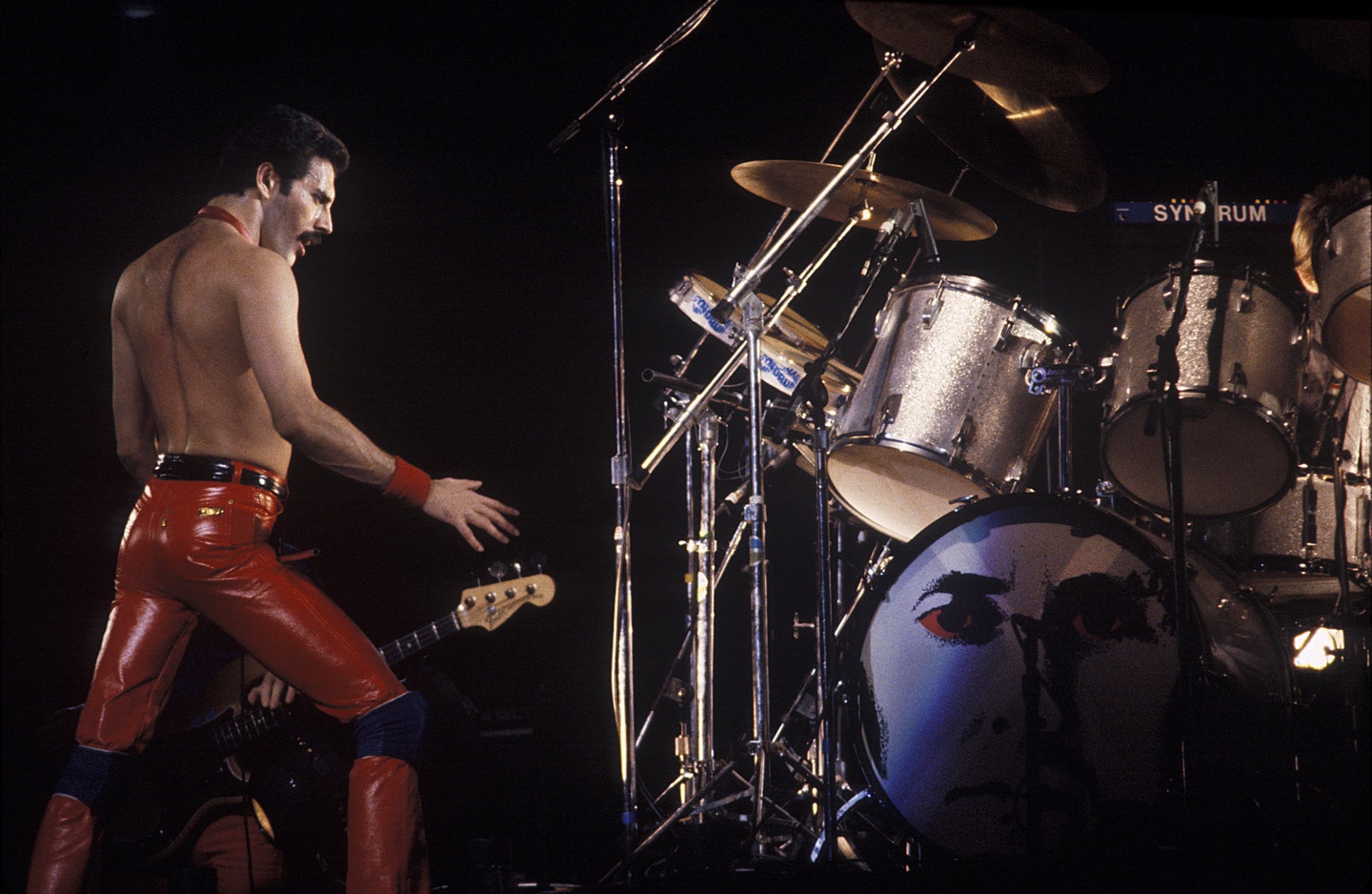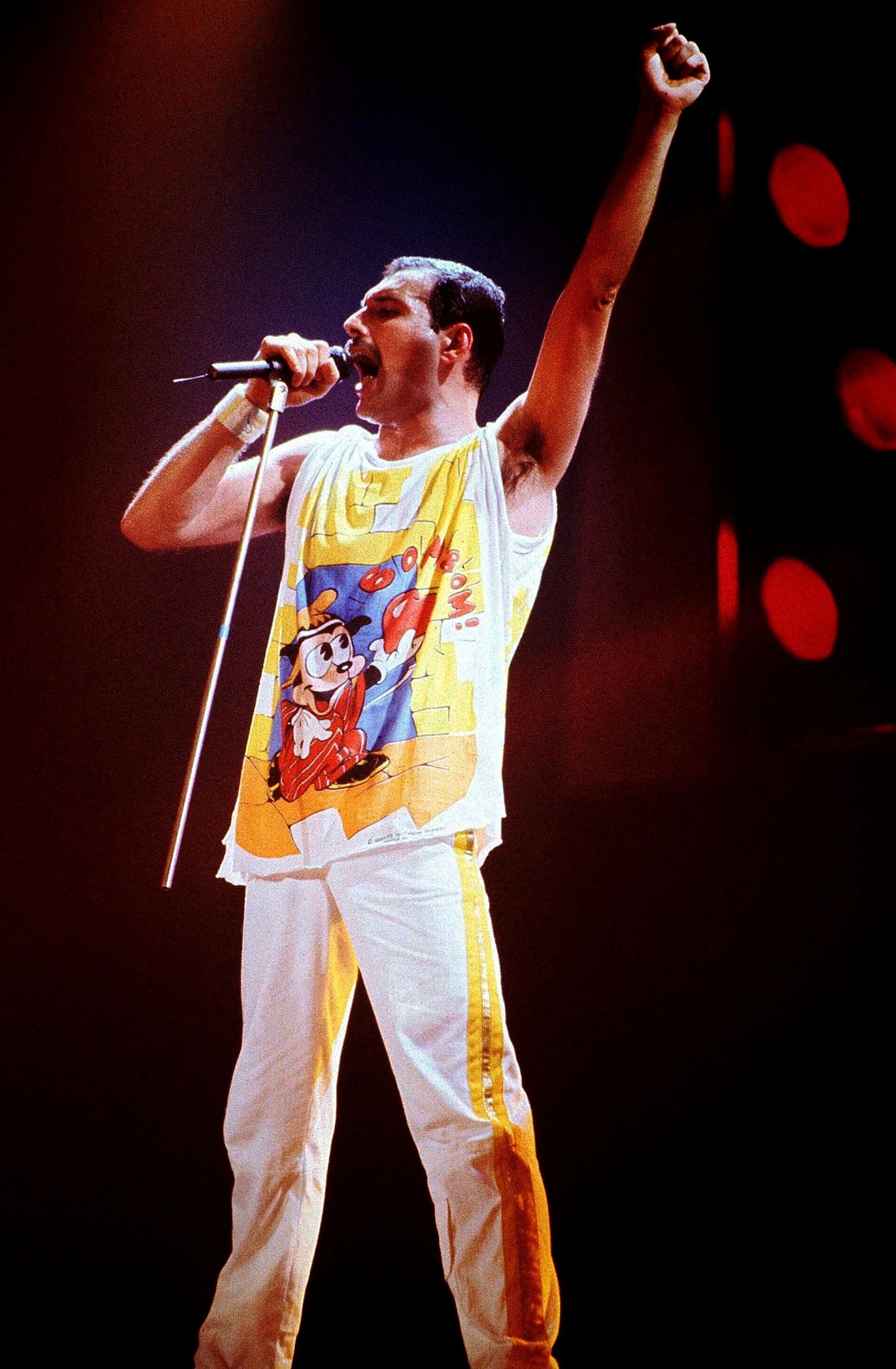“I Want To Break Free” creates a hollow sonic space that emphasizes the underlying criticisms of heterosexuality and gender included in the song. The song is in the key of E major, with relatively simple instrumentation. There is a recurrent synth riff that plays throughout the piece, along with the vocals, percussion, and the occasional electric guitar, which help to create a hollow musical space that draws attention to the lyrics.
The first sounds of the song are a triumphant-sounding ascent from F#4 to E5, played by what sounds like violins, synth, and cymbals. This introduction is consistent with the glam rock genre, a subgenre of rock that favors extravagance and musical intensity (Auslander 2009, 51). The ascent sets the glam aesthetic for the rest of the piece by dynamically and sonically creating a sense of tension that breaks with the introduction of a pop-like, rhythmic synth motive, coupled with the electric guitar playing over it. Furthermore, the abrupt change in register between the introduction and the actual start of the song helps to create a sonic space of intensity as well. Throughout the rest of the song, a rest/pause is used before every verse and guitar solo, which adds a sense of repetition to the song while also emphasizing the words being sung in each of the verses. In general, Queen is a glam artist, which is why it is important to consider the glam motives present in “I Want To Break Free.”
Another important musical component of “I Want to Break Free” is Queen’s use of rests and pauses to draw attention to the messages of the song. John Lynch (2003) explains that Freddie Mercury, despite being gay, “occupied a separate state of being” because of his stardom (180). Nonetheless, despite being decriminalized in Britain in 1969, homosexuality was still viewed as different from the norm of heterosexuality even for celebrities, an important context operating within this song (Lynch 2003). Connected back to the use of rests, Queen intentionally employs a rest right before the refrain of the song, which is when Mercury sings “I want to break free.” In doing so, there is emphasis placed on the notion of breaking free. At the same time that the refrain is introduced, the main riff of the song plays, which is shown below:

This riff is especially unique because unlike many examples of mainstream popular music, it is more of a rhythmic riff rather than a melodic riff. The riff is, for the most part, a repeated E that plays throughout the entire song while not distracting from what is important: Freddie Mercury’s vocals. Additionally, the form of the song helps to draw attention to the messages concerning sexuality and gender. Unlike many mainstream pop songs, “I Want To Break Free” consists of three verses, with the second and third verses being separated by a guitar solo that mimics that vocal line of the verses. This is important because in the same way that the riff is consistent throughout the piece, the song has a simple verse form. There is not a chorus in the traditional sense. This adds a type of continuity to the overall hollow sound of the song, which helps to guide the ear towards Mercury’s vocals and the messages they contain.

Another critical musical component to assess when considering the messages of sexuality and gender in “I Want To Break Free” is Mercury’s vocal timbre throughout the entire song. As mentioned in an earlier paragraph, hypermasculine, shouted lyrics frequent the sounds of glam rock (Auslander 2009). “I Want To Break Free” is not an outlier in this regard. In the song, Mercury sounds very masculine, even while singing in the high tenor range. Additionally, his vocal inflection sounds more shouted than sung, especially as he moves up into the higher registers. Juxtaposed with androgynous, feminine visuals, this hypermasculine sound becomes the focal point of the piece. Again, the instrumentation is simple and not a distraction; however, the timbre of Mercury’s voice is much more intense than that of the accompanying instruments. As a result, the hollow sonic space of “I Want To Break Free” is defined by the overwhelming presence of Mercury’s vocals, and instrumentation that, aside from the guitar solo, serves as background accompaniment rather than the primary musical sound. However, despite the musical symbols, it is impossible to fully understand what exactly Mercury wants to break free from by looking at the music alone, which is why the accompanying video for the song completely redefines the song’s meaning.
